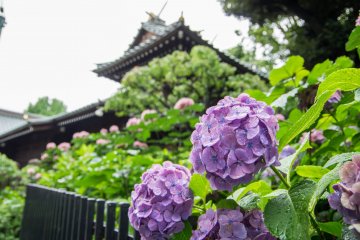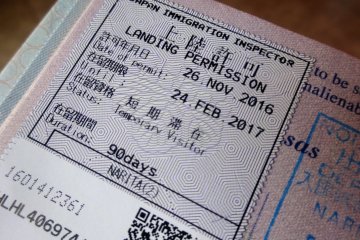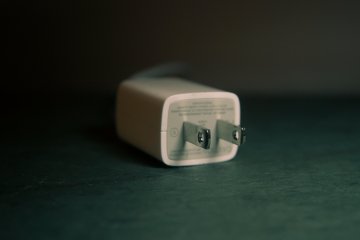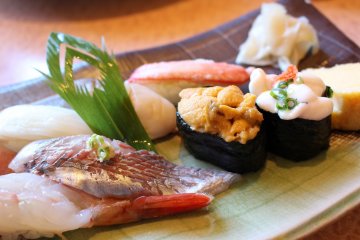Planning a trip to Japan is exciting! However, apart from cherry blossoms and Mt. Fuji, there may be things about Japan that you are unsure about. This guide will give you a basic overview of what to expect before embarking on a trip to the Land of the Rising Sun.
Visa
Entering Japan is simple: you must have a passport that is valid during the period of stay. You will receive a temporary visitor’s visa, and the number of days depends on where you’re from. For example, visitors from Brunei are allowed 14 days, and visitors from Indonesia and Thailand are allowed 15 days. Visitors from the United Arab Emirates have 30 days, while other countries and regions have 90 days. Residents of China, Russia, CIS Countries, Georgia, and the Philippines must obtain a visa before entering Japan. Learn more about Japanese visas.
Currency
The yen is Japan’s official currency. There are 1, 5, 10, 50, 100 and 500 yen coins and 1,000, 2,000, 5,000 and 10,000 yen banknotes in circulation. As of October 2024, the exchange rate for the US dollar to the yen is about 1:148.55. Even today, Japan is still largely a cash-oriented society, so don’t necessarily rely on touch payments or credit cards and bring enough cash with you to last. More about money in Japan.

Plugs/Electricity
Japan’s electricity runs on 100 volts, A.C. and has two frequencies—50 Hertz in eastern Japan and 60 Hertz in western Japan. Its electrical plugs have two flat pins that are also used in North American outlets. While most North American electrical appliances are compatible in Japan, make sure to check for signs of incompatibility that might cause damage. To be safe, bring a travel adapter when coming to Japan.
Security
Japan is one of the safest countries in the world. The low crime rates and extremely considerate citizens add to Japan’s status as a top travel destination. However, crime still exists and visitors should be careful in certain neighborhoods in the country. In red-light districts such as Kabukicho in Shinjuku and Tobita Shinchi in Osaka, exercise the same amount of caution as you would anywhere else, and you will be fine.
Climate
Japan is a temperate country with four seasons. Winter, which lasts from December to February, is dry and sunny. Temperatures drop as you go farther north, with the Tohoku region and Hokkaido Prefecture experiencing heavy snowfall. Spring is from March to May and is usually cool and sunny, making it perfect to enjoy the cherry blossoms that bloom during this period. Summer runs from June to August, bringing the rainy season to Japan. It is also hot and humid, and temperatures often go above 30 degrees Celsius. Autumn is from September to November, when the leaves turn brilliant shades of red, orange, and yellow. The weather is much cooler, and temperatures will fall quickly as winter arrives.

Do's and Don'ts
Do:
- Bow when greeting locals. Japanese people are now more accustomed to shaking hands but will still bow when meeting someone for the first time.
- Remove your shoes before you enter someone’s home, and leave them at the door.
Don’t:
- There is no need to tip when taking a cab or paying for a meal. Japanese people believe that quality service is part of the job so they do not expect extra payment—it might be rude to insist on tipping.
- Don’t speak loudly or talk on the phone when you take public transportation as Japanese people believe it is rude and disrespectful towards other commuters.
Transport
The Japanese transport network includes trains, buses, ferries, and planes. It is clean, reliable, and punctual. It’s not surprising to hear train companies apologising for being late—or early, in some cases. The shinkansen is the fastest train available and is a scenic option for traveling across the country. Regular Japan Rail and private-owned trains offer slower but equally comfortable alternatives. Adding to the convenience are IC Cards, which you can charge with money and use to pay for transport fares, as well as food and vending machines in some instances.
City buses are more common in smaller cities where the rail network is less developed, but are as punctual as the trains. There is also the choice of overnight highway buses, which take a longer time but are about half (or sometimes less) the cost of a shinkansen ticket.

Eating
Rice is a staple in Japan, and you’ll find it in most dishes. A wide array of noodles—ramen, udon, and soba—offers a mix of specialties in different parts of the country, creating a seemingly infinite number of noodle dishes to savor. The quintessential sushi can be found at every corner, and with Japan’s proximity to the sea, fresh fish and other seafood is abundant. As Japan maintains a high level of hygiene, feast all you like on sashimi and other raw food.
Street food consists of perennial favorites like takoyaki and okonomiyaki, which are cheap but delicious. To round the meal off, Japan’s popular desserts like crepe and soft serve ice cream provide a sweet aftertaste. You can also try some classic Japanese sweets such as dorayaki, dango, strawberry daifuku, and taiyaki. Read more on budget food in Japan.
Health
Japan has an excellent healthcare system. However, Japanese hospitals only accept Japanese insurance, and if you receive any medical treatment, you will need to pay the bills up front, which can be extremely expensive. For peace of mind, it is recommended to purchase foreign travel health insurance before your trip or apply for insurance after arriving in Japan. Please note that most doctors and nurses cannot speak English. Bigger cities, like Tokyo, have clinics that specialise in caring for foreigners. If you have travel health insurance, contact your insurance company for a list of affiliated medical institutions. Pharmacies in Japan generally do not carry foreign medications, so remember to bring your own. Japan’s tap water is potable, so feel free to drink from most places.
General
In case of emergencies, call 110 for the police and 119 for the fire or ambulance services. You can call for free with any phone, which includes pay phones.














